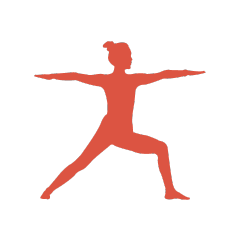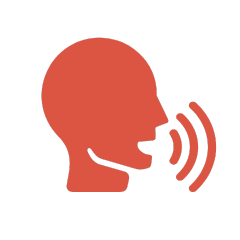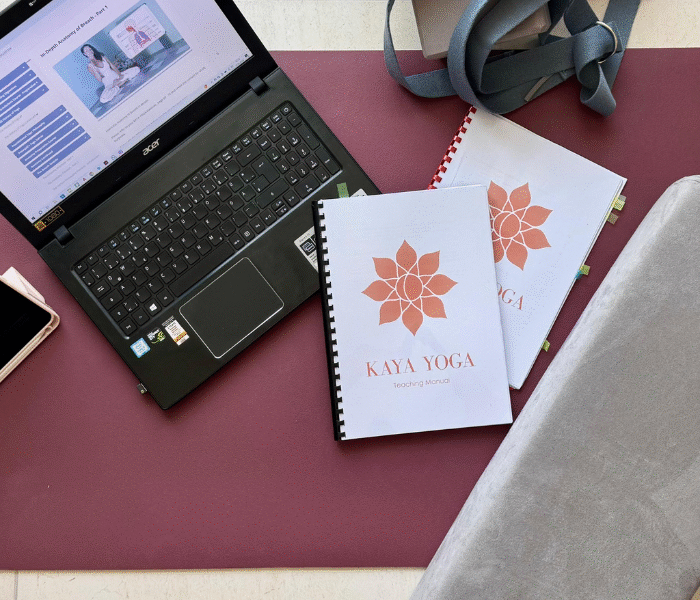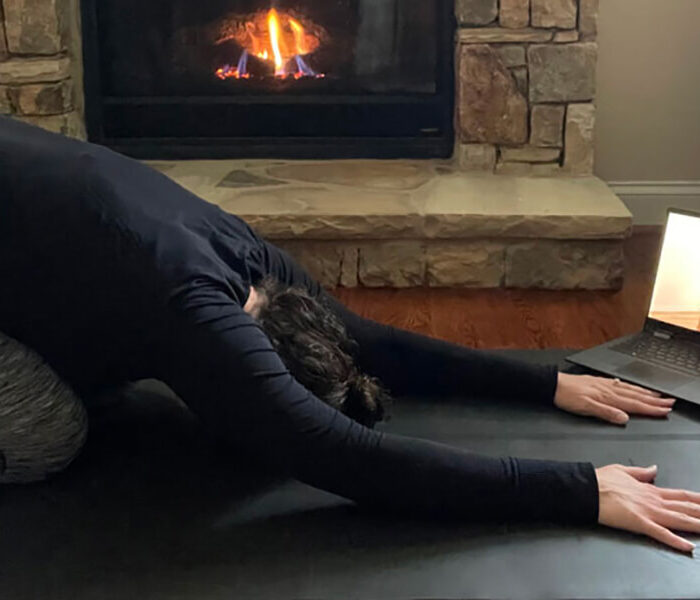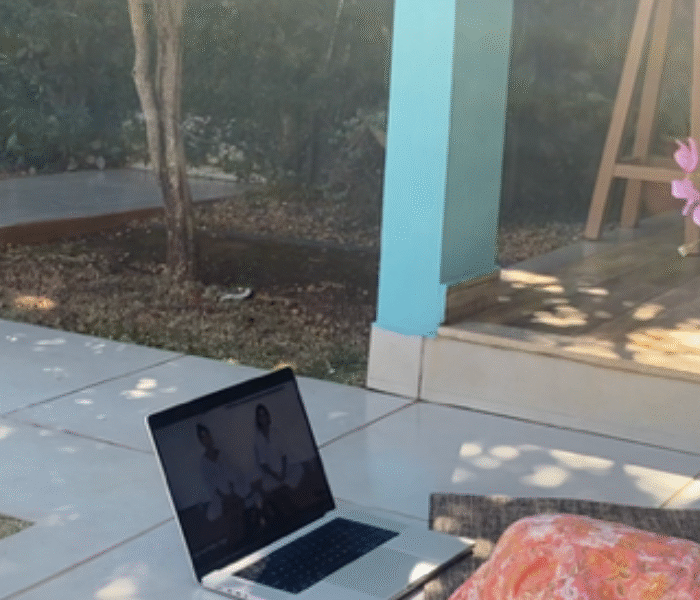200-hour online Yoga teacher training

Movement Wisdom 200 hour online YTT
The world is saturated with average yoga instructors. Avoid being just another face in the crowd!
Training Highlights
Hey there! 👋
I’m Jess Rose, and I’ll be guiding you through the Movement Wisdom 200-hour online yoga teacher training.
With all the available online yoga teacher training courses, you’re likely weighing your YTT options at the moment, so I’ll keep this brief. If you’re searching for an online yoga certification options, this program stands out right away.
So, why choose this course? The knowledge you’ll gain here will catapult you far ahead of the competition and equip you with everything you need to be a flexible, expertly-trained, and inspiring yoga instructor.
If you aspire to be at the pinnacle of yoga teaching and earn a living through yoga, you need the finest education available!




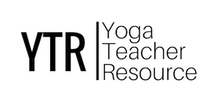


Learn 4 Different Styles of Yoga
Most 200-hour YTT programs concentrate on just one or maybe two styles of yoga. But yoga offers so much more beyond just Vinyasa Flow.
I’ll show you how to practice and teach four distinct styles, ensuring you’re always prepared with the perfect yoga style for any situation. This skill to provide both energizing and calming classes will give you a substantial edge at any yoga studio in town.
Master Cutting-Edge Movement Science
People are different not just externally but internally as well. We have various bone structures, body types, injuries, flexibility levels, and other physical factors.
That’s why a standard set of cues isn’t enough — and why this course sits alongside the very best online yoga anatomy training for anyone serious about teaching safely and intelligently.
Bring Ancient Yogic Wisdom into Modern Life
Yoga is not just a physical exercise; it’s philosophy in action! In the Movement Wisdom YTT, we’ll dive deep into the ancient teachings of yoga and apply them to contemporary life.
I’ll teach you how to enrich your classes with profound insights that will leave your students inspired. By the end of this training, you’ll be more than just a stretching instructor; you’ll be a genuine yoga teacher.
How It Works
Try the Course FREE for 14 Days!
Our graduates have gone on to lead sold-out workshops and retreats, open their own yoga studios, and have absolutely no issue securing yoga teaching positions!
This course is based on over a decade of hands-on experience and extensive hours of study and scientific research.
The program design has been honed through feedback from hundreds of students. The course format offers complete flexibility, and our team is here to support you every step of the way.

Start with your FREE 14-day trial
- Get instant access to the program
- See if you connect with lead trainer Jess
- Meet our incredible team and fellow students

Go through the course
- You get lifetime access to all content!
- Enjoy a wide range of topics and learning formats
- Join any or all of our 7+ weekly live calls Graduate When You’re Ready

Graduate when you’re ready
- Take as much time as you need (most complete it in 4–6 months)
- Optionally register with Yoga Alliance
- Join the Movement Wisdom Teacher’s Club after graduation!
Training Results
Your personal and professional transformation begins here.
If you fully embrace what you learn in this training, we guarantee you’ll become an advanced yoga practitioner, a highly skilled yoga teacher, and a radiant human being!
Start Your Free 14 Day TrialDrastically advance your personal yoga practice
- Understand your unique body and cater each and every pose to you.
- Learn new cues and techniques that get you into fun poses you never thought possible.
- Build a solid meditation and breathwork practice that lasts a lifetime.
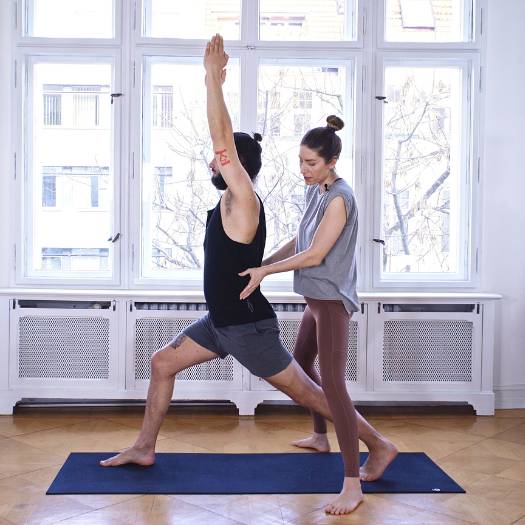
Become a top-level yoga teacher
- Become a versatile teacher who can offer the right yoga for any setting, and all levels of practice.
- Help every single person in the room with precise cues, assists and advice on what to do (or not to do).
- Craft inspiring classes that keep your students coming back for more.
- Carve out your niche in a 40 billion dollar industry.
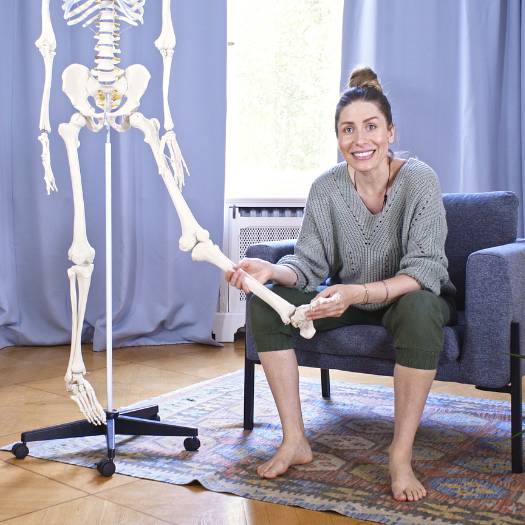
Uncover your inner radiance
- Become the type of person that everyone wants to be around (aka inspiring, relaxed and magnetic).
- Add meaning, purpose and direction to your life with the perfect blend of yogic mindset practices and modern life coaching.
- Broaden your horizons and learn to look at the world through the eyes of a yogi.
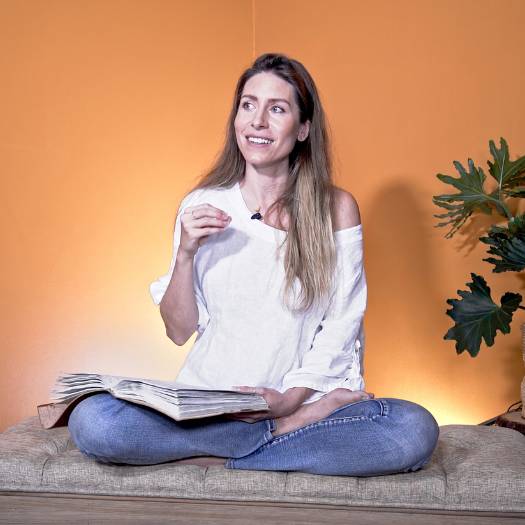
Course Contents
The details that make this training unique
Let’s take a look at the course contents. We don’t want to overwhelm you with all the details because everything will be super clear once you’re in the training.
But we do want to give you a brief overview of the 4 styles of yoga you will learn to practice and teach. And a quick intro to the 10 exciting modules that make up the program.
Your 4 styles of yoga
Being a versatile teacher who can instruct in four unique yoga styles is a game-changer! Your students will love the variety you bring to your classes, allowing you to switch things up at a moment’s notice.
This flexibility will make you highly desirable and employable at nearly any yoga studio (speaking from my experience as a former studio manager!).
Vinyasa Flow
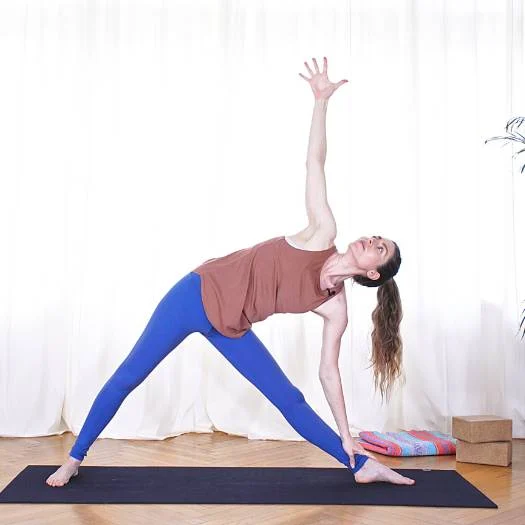
- Energetic, intense, rapid
- Artistic and rhythmic
- Centered on achieving a state of flow
Hatha Yoga
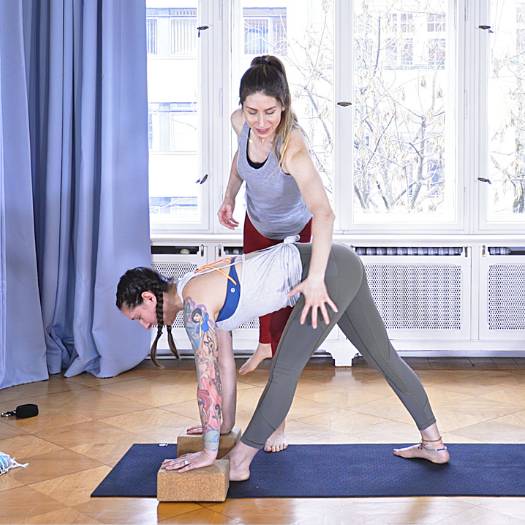
- Powerful routine
- More extended holds compared to Vinyasa Flow
- Emphasis on proper alignment and precise technique
Yin Yoga
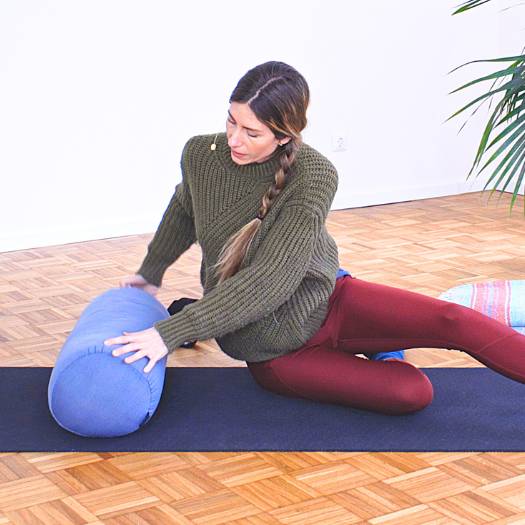
- Calm and soothing
- Extended holds, minimal poses
- Centered on fascia and connective tissue health
Restorative Yoga
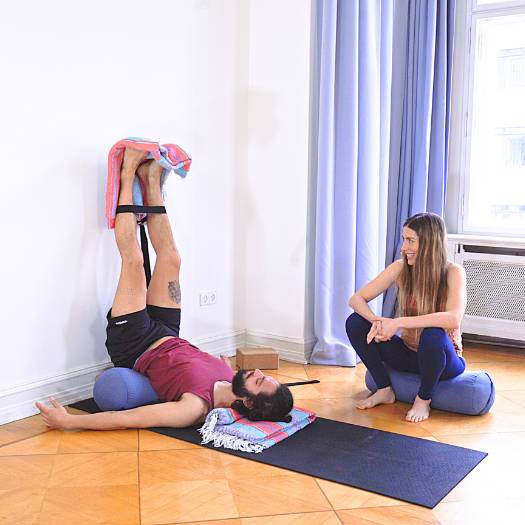
- Extremely gentle, reliant on props
- Fewer poses than Yin Yoga
- Emphasis on nervous system balance
Core modules
Now, let’s dive into the training modules: The 5 essential modules give you everything you need to understand to become an experienced practitioner and an outstanding instructor. They account for approximately 150 of the 200 training hours.
Asana Practice
Enhance your yoga practice with 30 comprehensive sessions created specifically for this course. Explore new poses, techniques, sequences, and yoga styles.
Pose breakdowns
Take an in-depth look at 100+ yoga poses and learn all the essential information. Master pose variations and modifications, with the help of props.
Teaching Yoga
Gain expertise in all crucial elements of teaching: giving cues, sequencing, theming, observing, assisting, demonstrating, using your voice, and more.
Yoga Anatomy
Don’t be intimidated by anatomy! This course makes it understandable, approachable, and fun – yes, fun! You will learn how anatomy and yoga integrate, rooted in the latest research.
Yoga Philosophy
Discover the real meaning of yoga according to the traditional sages. Learn how to apply this wisdom in today’s world. Plenty of practical takeaways and transformative inspiration for your teaching.
Complementary modules
These additional modules introduce an extra layer of depth and value to your learning journey. They cover the remaining 50 training hours.
Subtle Body
The unseen, potent currents of life energy that flow throughout your body are one of the most crucial aspects of yoga. Discover how to harness your own inner strength and enhance your energy.
Meditation
16 different styles of meditation from traditional, to spiritual, to contemporary. Establish or deepen your personal meditation practice and guide others. Understand clearly if you’re “doing it right.”
Breathwork
Yogis count their years in breaths rather than months or years. Lengthen your life the yogic way with 12 different types of breathwork with detailed guidance.
Personal Growth
Yoga is the study of the inner self. Everything in this training is designed to help you uncover your true self and realize your full potential. Discover your true purpose and bring clarity to your life.
Yoga Business
Learn the details of the yoga industry. Equip yourself to run a thriving yoga business, instruct online, or express your passion at a local studio.
Meet Your Teacher and Mentors
Learn from a leading industry expert and her team of specialists
15 years ago, I thought yoga was all woo-woo. Today, over a million people worldwide practice yoga regularly, and my yoga has been featured in top publications like Vogue, The Guardian, and New York Magazine.
But those accolades aren’t what really matter. What truly matters is that I’ve seen firsthand how yoga can enhance every aspect of our lives—our physical and mental health, relationships, values, and the person we choose to be each day.
That’s why I immerse myself in yoga day in and day out. I’ve completed 8 YTTs, attended countless specialty workshops, and journeyed to the remote corners of India to find elusive gurus. That dedication is why my teaching has been successful.
Ultimately, that’s why I founded Movement Wisdom: to share yoga’s transformative power with anyone who shares my passion for this remarkable practice.


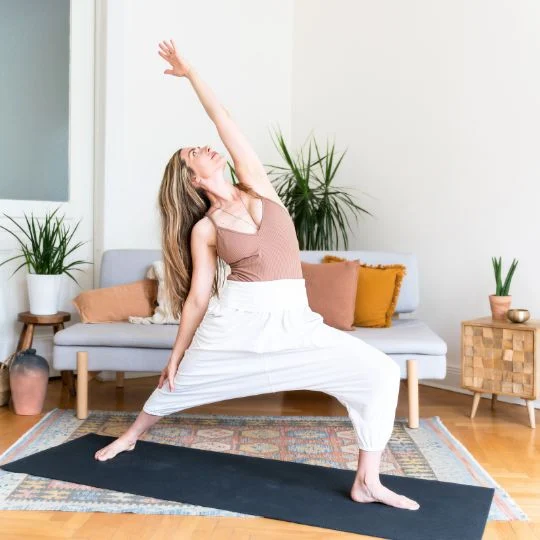
My teaching is (and yours will soon be)…
Versatile
In my view, the world’s top yoga teachers can instruct in Hatha, Vinyasa Flow, Yin, and Restorative Yoga, along with breathwork, mindfulness, and meditation. With this advanced toolkit of practices, you can sustain your students’ practice for a lifetime!
Backed by science
My teaching integrates cutting-edge science on anatomy and movement, which is rarely taught to yoga teachers (but I will share it with you in this course!). There is also a wealth of medical research supporting what and how I teach.
Inspiring and life-changing
I like my yoga classes to feel like a combination of a great workout and a life-coaching session. By blending yogic wisdom and philosophy with a modern twist, I help my students overcome blockages and challenges in both their bodies and minds.
Connect with your Movement Wisdom mentors

Heya! I’m Hanna 👋
I joined my first yoga class around the same time the Internet took off. As an individual predisposed towards laziness, I thought yoga would be the ideal ‘fitness’ for me, because I’d heard that next to swimming and making love, it targets all the muscles, and mostly you just lie down. Suited me perfectly.
What I didn’t expect to discover in a yoga class attended by mostly 60-plus-year-olds, was a connection to my body that it had been yearning for.
As a teenager, I developed an eating disorder and had a horrendous relationship with Self. Through yoga, I found an appreciation of my body as a vessel that can do all sorts of awesome things, and more importantly, I started chipping away at the false narratives that I’d been housing, to discern who I confidently am!
Over time, my practice ebbed and flowed, but after discovering Jess’ classes (yes, the Movement Wisdom Jess) online in 2016, I decided to commit to yoga as my medicine of choice and started to hit the mat daily.
I became qualified to teach in 2018 through another training program, and left Australia to start a new and exciting life in Berlin, Germany. That new life included the job title of yoga teacher, where I established an incredible tribe of students who responded to my style of teaching, which was basically to encourage authenticity both on and off the mat.
When the pandemic hit, Jess told me she’d be moving her 200-hour training online; and asked me if I would like to be a part of it. I leapt on board. What an incredible moment in my life that became, looking back.
Being a part of Movement Wisdom Yoga is a dream come true for me! My personal knowledge of yoga in all its forms has developed exponentially since joining, and I love having the opportunity to guide new yoga teachers like yourself through their journeys both as mentor and also as community manager
Alongside Movement Wisdom, I teach every day on the communal farm and campsite where I live in Portugal. My teaching style can be summed up in three Nirvana songs; Come As You Are, Smells Like Team Spirit (ok, I changed that one a bit), and Jesus Doesn’t Want Me for a Sunbeam. And that third one basically sums up feelings I had for a long time about not being ‘yogi enough’ to become a yoga teacher, because I didn’t fit the mould I believed was required to help people uncover the incredible relationship between body and breath, and the profound learnings of this philosophical and spiritual practice. But the deeper I dove into yoga, I realised the mould doesn’t exist. I can be my own kind of sunbeam – and I am ☀️
The world is a greater place because yoga exists in it, and I am forever humbled and grateful that my spirit found yoga.
I live in a vintage camper van in Portugal with my husband, dog, and about 20 other hippie-types whom I call family. I’m a vegetarian, a movie buff, an ally, and a moon-lover who only wears stretchy pants.
My favourite yoga pose is Pigeon.
I know.

Hi! I’m Stefanie 👋
I came to yoga for the physical, and I’ll stay forever for the mental and spiritual. In my thirties I started having so much pain in my knees I could no longer run and do the intense workouts I had been doing.
A friend urged me to try a regular yoga practice, and I started going to a class in studio 5 days a week. After a couple of months my joints had healed and I could run again, but it was too late. I was hooked on feeling good in my body, and now that I liked being in my body, I wanted to do something good for it every day.
When I teach, I try to give my students the experience of feeling good in their bodies for one hour. Our society teaches us to loathe our bodies, to want to change or improve them, and that we should suffer to achieve that. I think people are more likely to stick with a practice that feels good. That’s how the transformation and healing happens: by trying to be more here, we somehow arrive there. Yoga is sneaky that way.
The mental and spiritual benefits are sneaky too. Moving meditatively trains the nervous system to be calm. And breathing through challenging poses is practice for accessing your breath in difficult life situations. My students tell me that they notice themselves automatically breathing mindfully when things are tense at work. Because of their practice, it just happens without thinking. No matter what pose you are in, if you focus on your breath and feel what you are feeling, that’s yoga.
By practicing yoga, you’re doing something to bring more peace into the world. And you’re part of something big. People are practicing yoga in studios, fitness centers, schools, prisons, homes… and it’s making a difference in the world. If you want to do something meaningful, to make the world better, teach yoga!
I’m a graduate of the Movement Wisdom 200hr YTT, as well as the 500hr YTT for the hot yoga studio in Columbus, Ohio, where I’m teaching accessible, meditative Hatha yoga, a general Vinyasa Flow, and Yin classes with breathwork and meditation. As a teaching assistant with Movement Wisdom, I help new teachers identify and celebrate their strengths as they find their teaching style. My feedback focuses on clear, effective cueing and providing accessible options that empower all students to feel successful.
When I’m not teaching yoga, or teaching yoga teachers, then I’m making people. I have four children who love to swim, bike, hike and camp.

Hello! I’m Amanda 👋
I embarked on my yoga journey during a pivotal moment of transition, both personally and professionally. While navigating toxic relationships and preparing for significant shifts in my career and location, my first encounter with yoga in a Yin class left me feeling uncomfortably shaken. Despite this initial discomfort, it sparked a profound curiosity within me – what made these sensations so challenging to sit with?
Experimenting with various yoga styles over the following months, from Bikram to Vinyasa, I found myself drawn to the practices that challenged me physically and mentally, igniting a newfound passion and discipline within me. Yoga soon became an integral part of my life, accompanying me through relocations across the Northeastern US, the Pacific Northwest, the Midwest, and even the middle of the Pacific Ocean. Each new environment introduced me to inspiring teachers who offered unique perspectives on the practice, from tribal stomping to the soothing vibrations of crystal singing bowls.
For years, the idea of undergoing teacher training lingered in my mind, envisioning a transformative experience in exotic locations like Costa Rica. Serendipitously, after 13 years since my first Yin class, I found myself on Maui, nearing the end of a contract and facing another significant move with my partner. Seeking solace in my practice, I stumbled upon Movement Wisdom- a holistic training program that felt tailor-made for my journey.
By Chapter 6 of the training, my possessions dwindled to nothing but a yoga mat, my guitar, and our cherished cats. The experience delved me into my practice at a depth previously unexplored, revealing the profound unity underlying yogic philosophy – a revelation that now permeates every aspect of my life. As a transdisciplinary designer and educator, I am impassioned to craft experiences that inspire, rejuvenate, and transform. Yoga serves as a foundational tool in this pursuit, offering avenues for healing, compassion cultivation, creative expression, and the realization of more sustainable futures.
Today, I share the profound healing benefits with students in Upstate New York, focusing on fostering mental agility and physical mobility with beginner-friendly hatha, vinyasa, and yin classes. As I continue to unearth the depths of this ancient practice, I am dedicated to guiding others toward their own transformative journey of self-discovery and empowerment. As a part of the Movement Wisdom team, I am honored to help support this amazing network of aspiring yoga teachers.
Training features
Six additional benefits you’ll love about this training

450-Page Training Manual
Our expertly crafted training manual includes hundreds of high-resolution images of yoga poses, mudras, meditation postures, and pranayama practices, along with detailed illustrations of yoga anatomy to enhance your learning.

Audio Version
All lectures, workshops, and practices that don’t require video will soon be available as audio-only, giving you the option to watch or just listen. The best part? You’ll have the YTT classes right inside your favorite podcast app.
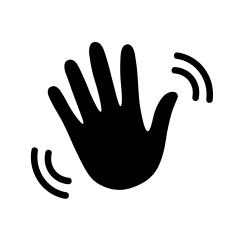
Motivating Course
Community Hundreds of inspiring yogis are ready for you to join the Movement Wisdom yoga revolution! Connect with members near you, participate in our buddy program, and join us at community events (both online and in person).

Customize Your YTT
Our training upgrade offers personalized feedback from our team of experts.* It’s not a necessity, but you might find it valuable. 😊 *Details available when you enroll.

Lifetime Access
Feel reassured knowing that the training content never expires. Take as much time as you need and rewatch classes whenever you want.

Movement Wisdom Teacher’s Club
After graduation, join other Movement Wisdom teachers in the Teacher’s Club to jumpstart your career and continue enhancing your skills. It’s free for grads!
Your Investment
Unlimited yoga education at an unmatched price
The total course value exceeds $6,000, but it’s offered for only $79/month an accessible entry into high-level yoga education. And if you’re comparing options, this program easily ranks among the best online yoga teacher training for movement-focused yogis wanting depth, science, and inspiration.
Here’s everything included:
 $79/month
$79/month

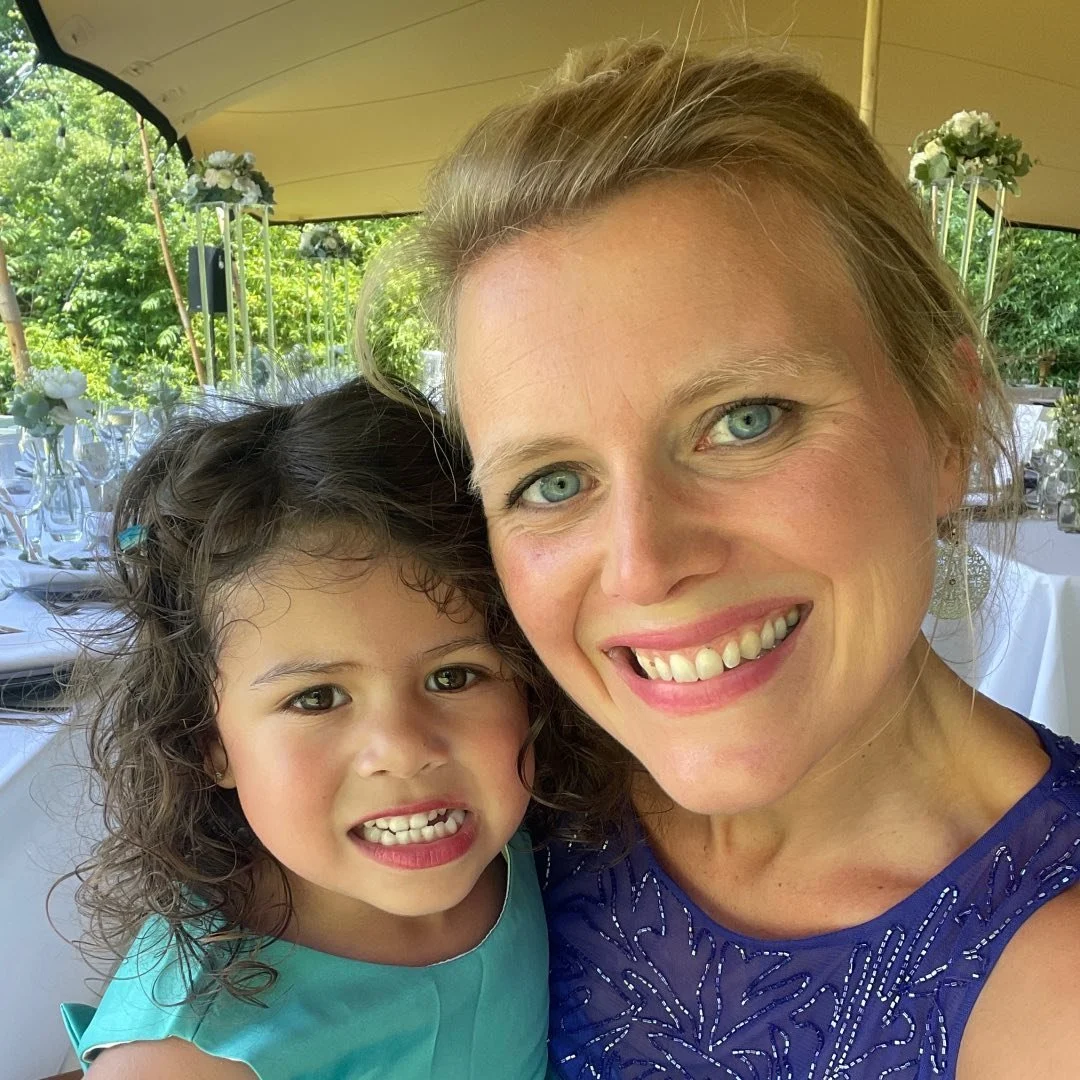
FAQs
Ensure this program is the perfect fit for you
In addition to your yoga mat and a few props, there are just three essential items to bring:
It might be hard to believe, but trust me: your current practice level, flexibility (or lack thereof), age, body type, physical condition, religion, or schedule don’t matter! You will succeed!
Click the buttons below to explore common questions and concerns. And feel free to schedule a call with us to discuss the details.
I can’t do some of the challenging poses like Handstand, Crow Pose, or the Splits. Is that a problem?
Not at all! This course is perfect for passionate yoga students who celebrate everything from holding Downdog for 5 breaths, to holding Handstand for 3 minutes, and everyone in-between!
One of the most important lessons you will learn in this training is that yoga takes place on the inside. It doesn’t matter at all what your practice looks like from the outside.
For one person, sitting still in meditation or lying down in Savasana is their biggest challenge on the mat. They might be able to do Scorpion pose all day long, but getting still and quiet feels impossible.
Someone else might be light-years away from touching their toes, but have an incredible yogic mindset and can meditate for hours on end. Our level of success in yoga is not visible on the outside – it’s all about our mental state as we do the things that challenge us the most.
There is no list of poses you need to be able to do in order to sign up and be successful in this course. There is no one style of yoga that you need to have practiced to take this course. Everyone who is passionate, motivated, and dedicated to achieving their highest results is welcome to join.
Do I get personal feedback from my teachers?
Yes. Lot’s of it!
- The training includes live teaching practice sessions in small groups. You’ll receive helpful and targeted feedback on your teaching from our Movement Wisdom mentors after each session. The teaching practices will solidify your skills, help you find your personal style and build confidence and clarity.
- We’ve included Empowerment Reviews (short quizzes) at the end of each training chapter to help you consolidate your learning and get feedback on where you might want to do some extra review of the course contents.
- You can ask your yoga-related questions in our community and I’ll respond to you directly with a short video. Every question you have will get an answer from me!
- You will receive supportive, practical and personal feedback from me on your final exam, as well as your teaching practices along the way.
- Join our regular “Asana Hour” calls with Jess to ask your questions about your poses and get immediate help and clarity.
- If you want even more highly detailed personalized feedback on your poses and sequences you can sign up for our optional training upgrade.
I have a full schedule already. How can I possibly find time for this course?
I can’t tell you how to make the time for the course. But I can assure you that it is possible to do the training even if your days are already full. Plus, you have lifetime access to the course and can graduate this year, or in 5 years from now!
We’ve had everyone from high-ranking executives to stay-at-home moms with 4 little ones complete this training. If they can do it, you can too!
If you love yoga, this course makes it easy to put your YTT before Netflix with a minimum amount of discipline.
And since the contents are prerecorded (and available as both videos and podcasts) you can literally study whenever and wherever you want (aka bathtub study sessions and educational walks in the park 😊).
The best part is this: We’ve been told over and over that the Movement Wisdom 200 hour training doesn’t drain your batteries. It recharges them!
I have suffered an injury that impacts my yoga practice. Can I still do the course?
Yes! As long as you have the green light from your doctor, you’re good to go! We’re not doctors ourselves, but are happy to offer detailed personal advice on how to modify your asana practice depending on your exact condition. Jess is highly trained in therapeutic yoga and is more than happy to have a call with you once you sign up for the course about how to make this training work for your specific condition!
And we trust that you will listen to your body and do only what works for you as you make your way through the training.
In the past, we have had students with injuries and medical conditions like these successfully and joyfully complete the course:
– carpal tunnel syndrome
– scoliosis
– hypermobility
– high blood pressure
– low blood pressure
– autoimmune diseases
– arthritis
– joint replacements
– chronic pain
– slipped and herniated discs
– cancer
Is this course beginner-friendly?
Yes! The Movement Wisdom 200 hour online YTT is a foundational program with plenty of options for beginners, intermediate, and advanced practitioners.
Don’t get me wrong – there will be poses in this course that challenge you both physically and mentally. But you are not expected to come to the training able to do everything – not even close! Yoga is a process. Your practice is a process. Your mindset when confronted with things you can’t yet do is a process. What shapes you make in your body (or don’t make!) are not at all important. Yoga is about so much more than that.
And to be honest, we love having students who are newer to yoga in our courses, as they come with more of a blank slate. Our more “advanced” students have a harder time in some ways, as they have a lot of old cues and yoga myths from their years of practice that they now want to unlearn!
Ideally, you have practiced yoga – any kind of yoga at any level – for at least 6 months.
Is this course suitable for seniors?
Yes! The Movement Wisdom 200 hour online YTT is great for older adults.
One of the most important lessons you will learn in this training is that yoga takes place on the inside. It doesn’t matter at all which poses you can or can’t do (anymore) or what your practice looks like from the outside.
For some, sitting still in meditation or lying down in Savasana is their biggest challenge on the mat. They might be able to do Scorpion pose all day long, but being still and quiet feels impossible.
Someone else might be light-years away from touching their toes, but have an incredible yogic mindset and can meditate for hours on end. Our level of success in yoga is not visible on the outside – it’s all about our mental state as we do the things that challenge us the most.
Note: if you have heart disease or osteoporosis, please send Jess a message once you start the training so she can help you personally cater each class to you!
Can I really improve my practice and learn to teach yoga on the internet?
Yes, absolutely 👍
In fact, there are very good reasons why you should sign up for an online YTT over an in-person training.
But before we dive in, let’s make one thing clear:
The quality of any yoga teacher training – in-person or online – depends almost entirely on the knowledge and skill of your YTT lead trainer.
- How much do they know about the different aspects of yoga?
- Can they communicate their knowledge effectively?
- Do you personally resonate with their character, their vision, and their style?
- Do they live and breathe and easily share the yogic worldview with others?
Picking the right teacher is the #1 most important thing you can do when choosing your YTT. This cannot be overstated! Whether you study with them online or in-person is secondary.
Okay, now let’s consider the advantages of online trainings:
1. Flexibility
Your typical in-person training will take place full time (usually 4 weeks) or on weekends (usually 10 long weekends in a row). You have to be there or you can’t do the course. Online trainings, on the other hand, can be incredibly flexible (when most of the lessons are pre-recorded). In the Movement Wisdom YTT you decide when and where and for how long you study.
2. Better content:
Filming a 200 hour training is sooo much work. We don’t want to do it ever again! 😂 That’s why I prepared each class carefully and with great attention to detail. In an in-person training, on the other hand, the lead trainer will teach between 8 to 12 hours every day. It’s easy to see why peak-performance teaching might not be possible in this set up.
3. Watch it again
Did you really like a lecture and want to replay it multiple times? Trying to grasp a difficult concept and need a replay? Want to start the training all over again to see how much you’ve improved and to deepen your knowledge even more? No problemo! All of these things are possible in our online YTT. But of course totally impossible with an in-person YTT.
4. Permission to relax
You won’t ever be rushing to class. No worries about what other people think about your hair. And if life gets in the way – that’s okay. Your classes will still be there tomorrow, waiting for you patiently.
5. Environmentally friendly
No more guilty conscience about flying across the globe to study with an industry leader; just do it from home! Streaming is so much less harmful to the environment than flying to Bali or driving multiple times per week to the nearest yoga studio.
6. Risk-reduction
Any good online YTT will give you the chance to try before you buy. This way you can get to know the teacher, dip your toes in the water and see what you’re signing up for. An excellent online YTT will even give you a free trial period (we do). Our training is risk free, leaving the decision to commit totally up to you. In an in-person training, on the other hand, you have many substantial risk factors even if you’re confident that your teacher is amazing (accommodation, food, room-mates, weather etc.)
I’m pregnant, can I still take this training?
Yes! I have prepared a detailed guide on how to modify your yoga practice if you are pregnant during your YTT. If you follow this guide you and your baby will be totally safe. And if you have any questions at all after reading the guide, we can jump on a call at any point to make sure everything is 100% crystal clear.
There are limitations for your physical practice during pregnancy. These differ depending on which trimester you’re in. You should avoid certain types of poses and breathwork practices. All of this is outlined in the guide.
Your pregnancy will not impact your ability to go through and complete the course, so no worries at all! And – I’ll let you in on a little secret – I filmed most of the classes in this training while pregnant with my second! So now you really know that it’s do-able. 🥰
Will my religious beliefs conflict with this yoga teacher training?
No. This 200 hour YTT does not ask you to believe anything.
There is no system of yogic beliefs that you have to subscribe to in order to be a “good yogi”. So if you already practice a religion – don’t worry – yoga won’t get in the way. Rather, it will be complimentary and you’ll find many familiar ideas, just framed differently.
And if you’re an atheist, you can totally stay in your lane, too. The only thing a good yoga teacher training will do is broaden your horizons. Hopefully a lot. And as far as I know, that has never hurt anybody. 😎
How do you help me stay motivated?
We know that motivation levels can change from one week to the next. We’ve all been there. We also know that a 200 hour training is a marathon, and not a sprint. We know that learning from the comfort of your home can sometimes present distractions. We know that flexibility is good, but too much flexibility can be disorienting.
That’s why we do everything we can to help you stay on track from the first day of your training all the way through to graduation.
Here are some of the big and small things you can look forward to:
- weekly live teaching practices that keep you engaged and inspired
- an engaging, inspiring and motivating teaching style
- teachings on yoga that are equal parts surprising and fascinating
- a course structure that prevents overwhelm
- monthly challenges for the whole training community
- personal accountability buddies
- clear guidance along every step of your journey
- a broad variety of learning formats
- limitless flexibility that allows you to take breaks when you need them
- a ready-to-print training manual that makes everything feel more “real”
- a class-by-class progress tracker for your fridge, planner, or desk
I don’t plan to teach yoga. Does it still make sense for me to take a 200 hour YTT?
Yes! About 25% of Movement Wisdom students do not intend to teach after graduation. So you’re not alone!
This training is – first and foremost – an opportunity to deepen your own personal practice and understanding of yoga. You’ll learn crucial information about your body, including it’s abilities and challenges on the mat. You’ll also cultivate the attention and wisdom you need to have a sustainable and exciting practice for life.
We give you insights into the ancient philosophies of yoga that will help you bring these powerful lessons into your life right away. And the teaching practices, although at first glance might not seem relevant to you, will actually teach you beneficial life skills like using your voice, finding confidence, and presenting yourself to others positively.
There is so much to gain from taking a yoga teacher training, whether or not you plan to teach yoga.
Will I be able to attend live calls in my timezone?
Good question! We are fortunate enough to have students from all parts of the world. What a wonderful environment! Still, the vast majority of students are from Europe and North America. And our team members are also based on these two continents. Therefore, our events are scheduled primarily with the corresponding time zones in mind.
Here are a two rules of thumb:
- If you’re anywhere between Los Angeles in the West (UTC -9) and Moscow in the East (UTC +2), and you’re somewhat flexible with your schedule – then you should be able to attend events during waking hours.
- If you’re in the Middle East, Asia or Oceania and you’d like to attend, then you’ll occasionally have to stay up very late or get up very early. Sorry!
Is this course Yoga Alliance certified? And what does that actually mean?
The Yoga Alliance is an international non-profit group that represents and supports both yoga teachers and the yoga industry. They set the industry standards for yoga teacher trainings.
The Movement Wisdom Online 200 Hour Online YTT is certified by the Yoga Alliance. This means that once you graduate, you’ll be able to register with the Yoga Alliance and use the title “RYT 200” after your name (e.g. “Amy Smith, RYT 200”). It’s the yoga version of adding letters to your name from university and other higher education certifications.
This certification is important, among other things, because many studios won’t hire you without it. The thinking is that the program they were a part of gave them the foundational concepts that they need to teach. Not every YTT gives their students this foundation.
Some yoga teacher training programs are not registered with the Yoga Alliance. This means that they either did not meet criteria for registration (they didn’t have the appropriate curriculum or level of certification of their lead teacher trainers) or they do not want to register with Yoga Alliance, even though it might hurt their students in the long run not to be registered.
The fact that the Movement Wisdom YTT is registered is beneficial to you, whether or not you decide to officially register with the Yoga Alliance (which includes a small yearly fee) or not.
Do I have to be on Zoom a lot for this course?
Not at all. Almost the entire program is pre-recorded. Only about 1 in every 10 training hours happens live on Zoom.
Click on “Timezones” to learn more about our schedule.

